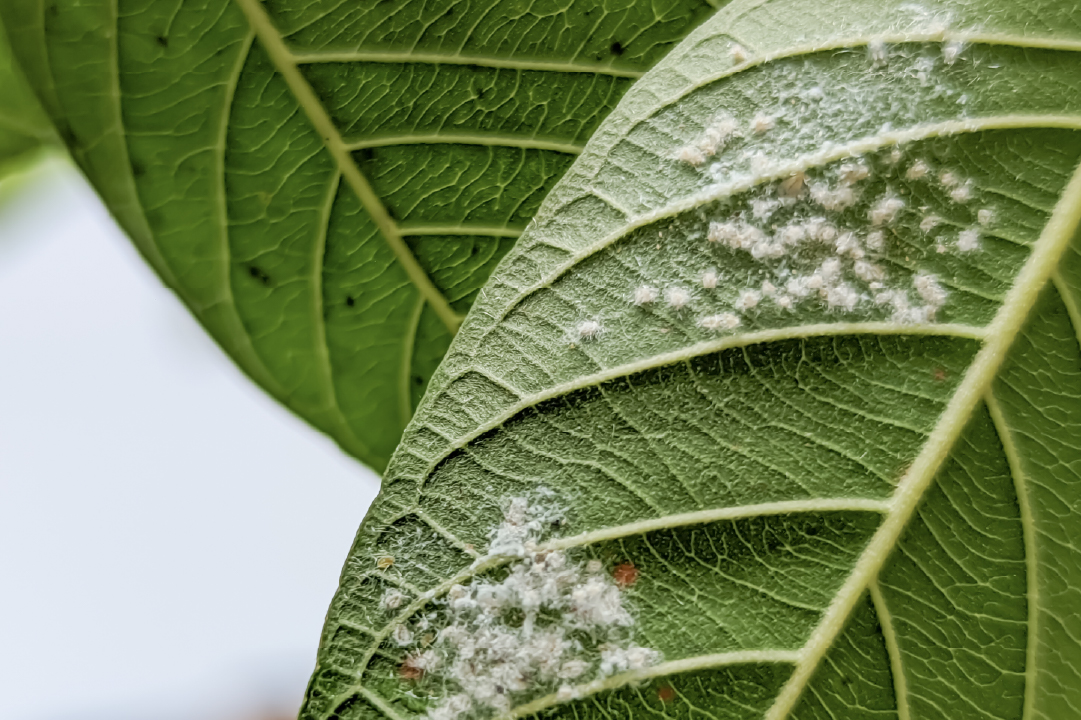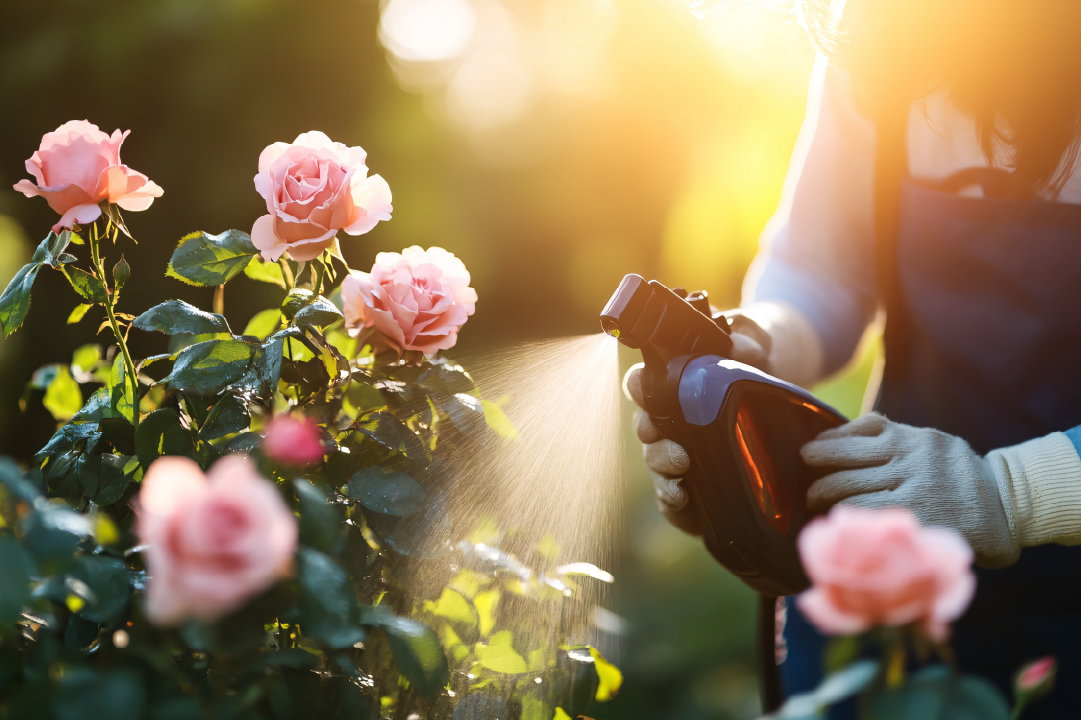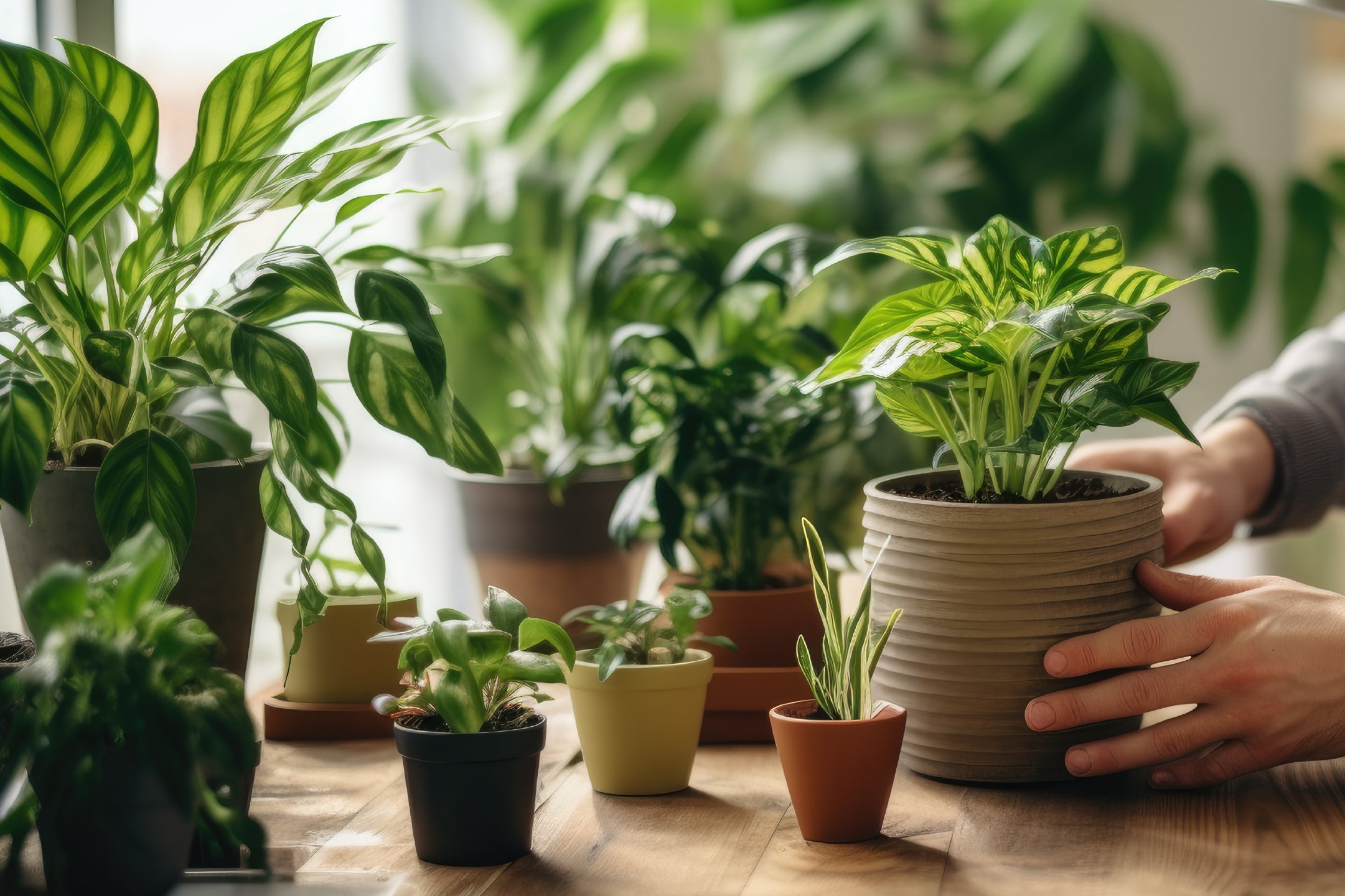.jpg)
Mealybugs are tiny, soft-bodied insects that can become a major problem for gardeners and plant enthusiasts. Recognized by their white, cottony appearance, mealybugs feed on plant sap, weakening plants, causing stunted growth, and leaving behind sticky honeydew that encourages the growth of sooty mold. If not treated in time, mealybugs can spread rapidly, affecting indoor plants, outdoor gardens, and even greenhouse crops.
In this blog, we will explore everything about mealybugs, their life cycle, how to identify them, and most importantly, mealybug treatment strategies that are safe, effective, and environmentally friendly.
What Are Mealybugs?
Mealybugs are small, oval-shaped insects that are usually white or grey with a waxy, cotton-like coating that makes them easy to spot. These pests belong to the family Pseudococcidae and are known for infesting plant stems, leaf nodes, and roots. They pierce plant tissues and suck out the sap, causing leaves to yellow, curl, and drop prematurely. In addition to weakening plants, they excrete sticky honeydew, which attracts ants and encourages the growth of sooty mold. This not only damages the appearance of your plants but can also hinder their ability to photosynthesize. Mealybugs thrive in warm, humid conditions and reproduce quickly. Female mealybugs can lay hundreds of eggs in protective sacs, making infestations particularly persistent. Understanding their characteristics is key to effective mealybug treatment and control.
Understanding Their Life Cycle
A mealybug’s life cycle consists of three main stages:
- Egg Stage: Females lay up to 500 eggs in protective cottony masses.
- Nymph Stage: Young mealybugs, known as crawlers, disperse quickly and start feeding.
- Adult Stage: Adults continue feeding and reproducing rapidly.
Understanding the life cycle is crucial for timing your mealybug treatment for maximum effectiveness.

Signs of Mealybug Infestation
Look out for these common signs:
- White, cotton-like masses on leaves, stems, and roots
- Sticky honeydew deposits
- Sooty mold growth
- Yellowing and curling leaves
- Poor plant growth and premature leaf drop
Early detection can help you initiate mealybug treatment before they become a widespread issue.

Natural and Organic Mealybug Treatment Methods
1. Rubbing Alcohol Solution
Dip a cotton swab in 70% isopropyl alcohol and dab directly on mealybugs. This dissolves their protective wax coating and kills them instantly.
2. Neem Oil Spray
Neem oil is one of the most popular organic solutions for mealybug treatment. It acts as a repellent and disrupts the pest’s hormonal balance.
- Mix 1 tablespoon of neem oil with 1 liter of water and a few drops of mild liquid soap.
- Spray weekly until the infestation is controlled.
3. Beneficial Insects
Introduce ladybugs, lacewings, and mealybug destroyers (Cryptolaemus montrouzieri) to naturally control populations.
4. Soap and Water Spray
- Mix mild liquid soap with water (1 teaspoon per liter).
- Spray thoroughly on affected areas.

Chemical Treatments for Severe Infestations
If natural methods don’t suffice, chemical insecticides may be necessary. Look for products labeled for mealybug treatment, such as systemic insecticides containing imidacloprid. Always follow the product label and avoid overuse to protect beneficial insects.
Preventive Measures for Mealybug Control
- Regularly inspect plants, especially the undersides of leaves.
- Keep plants clean by wiping them down with a damp cloth.
- Avoid overwatering and excessive nitrogen fertilization, which can attract mealybugs.
- Quarantine new plants before introducing them to your garden or indoor collection.
- Use sticky traps to catch crawling nymphs.

Mealybugs can quickly become a gardener’s nightmare, but with timely action and the right approach, you can reclaim your healthy, beautiful plants. Identifying the problem early, choosing the right mealybug treatment, and practicing preventive care will keep your plants thriving year-round. Whether you prefer organic solutions or need chemical interventions for severe infestations, consistency is key. Stay vigilant, regularly inspect your plants, and use safe methods to control these persistent pests. Remember, healthy plants are less likely to suffer from infestations, so proactive care is your best defense.
Protect Your Plants with DeHaat Bageecha Health 360
If you’re dealing with a persistent mealybug problem, it’s time to try DeHaat Bageecha Health 360. This 100% natural, plant-based formula is designed to combat pests like mealybugs effectively without harming beneficial insects or pets.
Why Choose Health 360?
- Safe and non-toxic for indoor and outdoor plants
- Effective against mealybugs, aphids, mites, and more
- Strengthens plants and boosts immunity
- Easy to apply with long-lasting protection
Keep your plants healthy, thriving, and pest-free with DeHaat Bageecha Health 360—your natural solution for garden care!
FAQs
1. What are common signs of a mealybug infestation?
Look for cottony white clusters on the stems and undersides of leaves, sticky honeydew deposits, black sooty mold, and stunted plant growth. Early detection makes mealybug treatment easier and more effective.
2. Can mealybugs damage my plants permanently?
Severe infestations can weaken plants significantly, causing leaf drop and stunted growth. If not controlled, they can even lead to the death of the plant. Early mealybug treatment is essential to prevent lasting damage.
3. How do mealybugs spread?
Mealybugs can crawl between plants or be carried by ants that farm them for honeydew. They can also hitchhike on clothing, tools, or newly introduced plants.
4. Are there any natural predators of mealybugs?
Yes! Ladybugs, lacewings, and parasitic wasps are natural predators that help control mealybug populations.
5. How long does it take to control mealybugs?
Depending on the severity of the infestation, consistent mealybug treatment with natural or chemical solutions over 2-4 weeks can significantly reduce or eliminate the problem.
6. Can I use neem oil indoors?
Absolutely! Neem oil is safe for indoor use and can be part of your regular plant care routine to prevent future infestations.
7. Why do mealybugs keep coming back?
Mealybugs often hide in hard-to-reach areas and lay eggs that hatch later. Regular inspections, proper sanitation, and preventive treatments are crucial.



